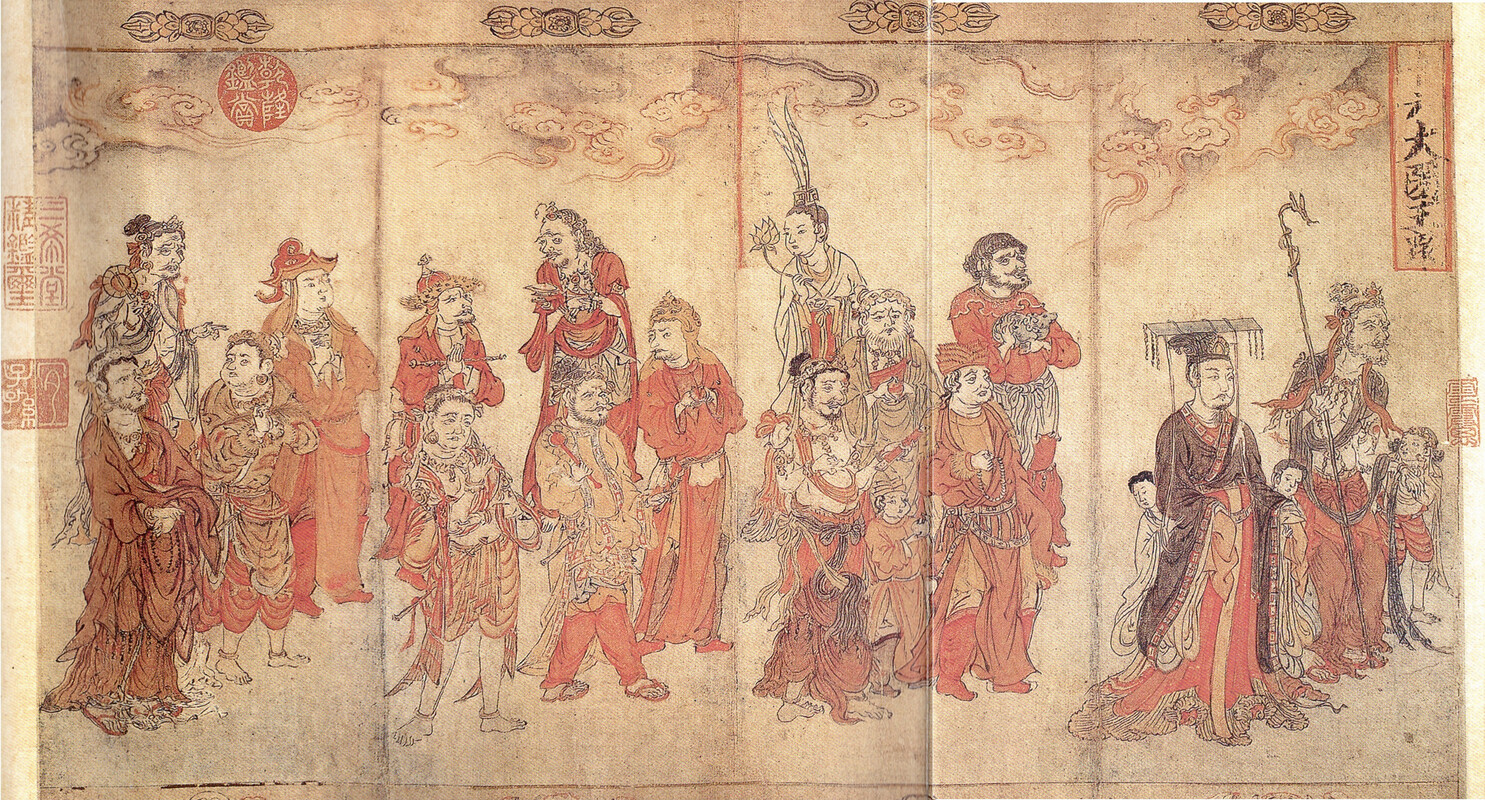 |
| 十六大圀王眾。 The kings of the Sixteen Great Realms and their Attendants |
| 131 - 136 |
The composition used is obviously indebted to representations of the monarchs who come from all quarters to attend the debate between Vimalakīrti and Mañjuśrī. There, however, within the boundaries of China proper the Chinese emperor is set with his courtiers on one side and the outlanders are massed on the other. Here they are all foreigners, with the entire length of the roll between them and the Yunnanese ruler at its head. The Chinese emperor, with two acolytes to hold his heavy sleeves, shares the first frame with a figure who looks like a senile Bodhisattva, and so presumably stands for India. The characterization of the rest is perfunctory, in comparison with paintings at the Dunhuang caves. It is curious that no figure is dark-skinned, in view of the relations that existed between Yunnan and Southeast Asian countries. |


